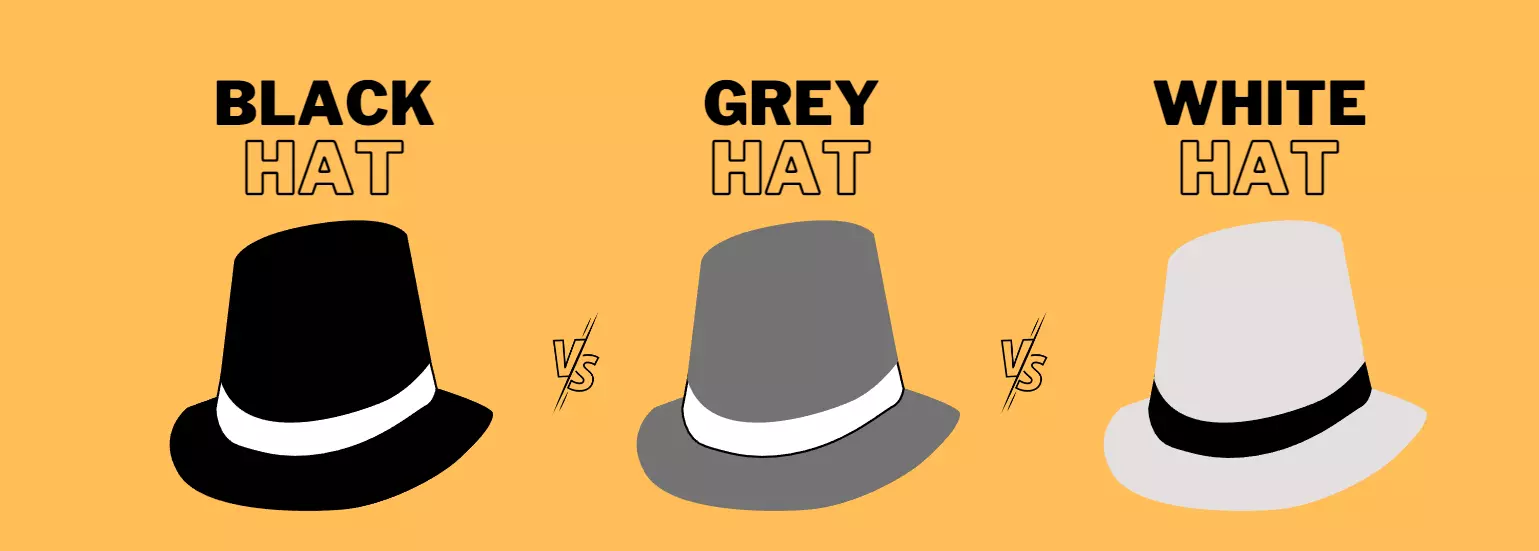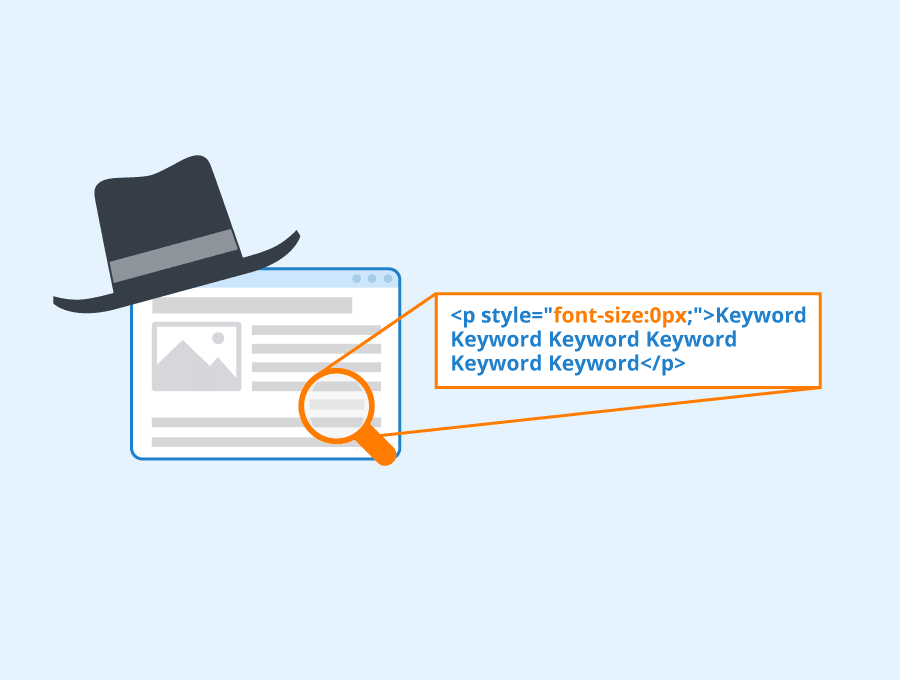In the evolving world of search engine optimization (SEO), the debate between white hat, black hat, and grey hat SEO tactics continues to dominate conversations among SEO professionals.
Grey hat SEO occupies a unique space—a middle ground between ethical white hat SEO and riskier black hat SEO techniques. But what exactly is grey hat SEO, and should you consider using it to boost your search engine rankings?
Let’s dive into this complex topic.
What is Grey Hat SEO?

Grey hat SEO refers to optimization practices that fall in a “grey area” between white hat and black hat SEO.
These techniques are not explicitly banned by search engine guidelines but may still violate Google’s webmaster policies if misused. They aim to manipulate search engine rankings without blatantly crossing into unethical territory.
Why is Grey Hat SEO Important?
- Improved Search Engine Rankings: Grey hat techniques can provide a competitive edge by boosting rankings faster than traditional white hat methods.
- Cost-Effectiveness: Many grey hat tactics, such as buying links or using private blog networks (PBNs), can be more affordable than organic link-building campaigns.
- Flexibility: Grey hat strategies allow website owners to experiment with innovative approaches while staying mindful of search engine guidelines.
Should You Use Grey Hat SEO?

Using grey hat SEO depends on your goals and risk tolerance. These techniques, like buying links or using private blog networks (PBNs), can boost search engine rankings quickly but come with risks.
Search engines like Google constantly update algorithms to detect manipulative practices, which could lead to penalties, such as ranking drops or even deindexing.
While grey hat SEO may work in competitive industries or for short-term campaigns, it lacks the long-term stability of white hat SEO. For sustainable growth, focus on ethical SEO practices that enhance user experience and comply with search engine guidelines.
Grey Hat SEO Vs White Hat SEO Vs Black Hat SEO

| Aspect | White Hat SEO | Grey Hat SEO | Black Hat SEO |
| Compliance | Fully follows Google’s guidelines | Operates in a grey area; partially compliant | Violates search engine guidelines |
| Risk Level | Low | Moderate | High |
| Examples | Guest blogging, keyword research | Buying links, cloaking | Keyword stuffing, hidden text |
| Longevity | Long-term, sustainable results | Short-to-medium term gains | Short-term gains with high penalties |
| Focus | Quality content and user experience | Balances risk and reward | Manipulates search engine algorithms |
White hat SEO prioritizes user experience and long-term growth by adhering to ethical practices like creating high-quality content and building organic traffic. Grey hat SEO blends white and black hat techniques, offering quicker results but at the cost of potential penalties. Black hat SEO directly violates search engine rules and often results in severe consequences like deindexing.
Should You Use Grey Hat SEO Techniques?
Grey hat techniques, such as cloaking or keyword stuffing in moderation, can provide a competitive edge but should be used cautiously.
These methods often fall into a “grey area” where they don’t fully violate search engine guidelines but still manipulate rankings. While they may offer short-term benefits like improved visibility or domain authority, they also risk penalties if detected by Google’s algorithm updates.
For website owners focused on long-term success, white hat techniques like quality backlinks and guest posts are safer alternatives. Always weigh the risks of grey hat SEO against its potential rewards.
Grey Hat Techniques

Grey hat techniques include many methods that are not clearly right or wrong. They often take advantage of loopholes or technical details. These methods are not against search engine guidelines, but they may not be fully ethical or sustainable over time.
This section looks at different grey hat SEO techniques and examples. It explains how they work, what benefits they might have, and the risks they pose. It’s important to use these techniques carefully. Always think about the good and bad aspects before using them on your website.
Buying Or Trading Links
Buying or trading links is a common grey hat SEO tactic where website owners pay for backlinks or exchange links with other websites to improve their domain authority and search engine rankings.
While this can help build links quickly, it violates Google’s guidelines if overdone or done with low-quality, spammy links. Search engines prefer natural, high-quality backlinks, so relying too much on this tactic can lead to penalties.
Always ensure the links add real value and align with your SEO strategies.
Spinning Content
Content spinning involves rewriting existing content using automated tools to create multiple versions of the same article. This technique aims to generate new content for web pages without much effort.
However, spun content often lacks quality and originality, leading to a negative user experience and low search engine rankings. Search engine crawlers can detect duplicate or low-quality content, which may harm your site’s credibility.
Focus on creating high-quality, original content instead.
Paying For Reviews
Paying for positive reviews on platforms or websites can boost your brand’s reputation and influence search engine rankings.
However, this grey-hat SEO tactic can backfire if users or search engines discover the reviews are fake or incentivized. Authenticity is key to building trust and improving user experience. Instead of paying for reviews, encourage satisfied customers to leave genuine feedback.
Duplicate Content
Duplicate content refers to reusing the same text across multiple web pages, either on your own site or others.
While it might seem like an easy way to save time, search engines like Google penalize duplicate content because it confuses search intent and reduces the value of search results.
To avoid penalties, focus on creating unique and relevant content that aligns with your SEO practice.
Cloaking
Cloaking is a deceptive technique where different content is shown to users and search engine crawlers.
For example, a website might show keyword-stuffed pages to Google while displaying user-friendly pages to visitors. This tactic manipulates search engine rankings but violates Google’s webmaster guidelines.
If detected, cloaking can lead to severe penalties, including deindexing.
Using Old Or Expired Domains
Purchasing old or expired domains with existing backlinks can improve your site’s domain authority and organic traffic.
However, if the domain has spammy links or a bad reputation, it could harm your website’s SEO performance. Always analyze the backlink profile and history of expired domains before using them in your link-building strategy.
Keyword Stuffing
Keyword stuffing involves overloading web pages with keywords in an attempt to manipulate search engine rankings.
While it might temporarily improve visibility in search results, this black hat SEO technique creates a negative user experience and violates Google’s algorithm standards. Instead, focus on keyword research and naturally include keywords in high-quality content.
Private Blog Network (PBN)
A private blog network (PBN) is a group of websites owned by the same person used to build links back to a main site. PBNs can improve rankings quickly but are risky because they violate Google’s guidelines against manipulative link-building tactics.
If detected, your site could face penalties or even be deindexed from search results.
Native Advertising and Partnerships
Native advertising involves promoting sponsored content that blends seamlessly with organic traffic on platforms like blogs or social media.
While effective for building links and brand awareness, it must be disclosed as paid content to comply with Google’s webmaster guidelines. Misleading users about sponsored partnerships can harm trust and reputation.
Paying For Citations and Listings
Paying for citations in local directories can help improve local SEO by boosting visibility in local search results.
However, relying on low-quality directories can lead to spammy links that hurt your backlink profile. Ensure that citations are from reputable sources aligned with your business niche.
Submit Your Site To Web Directories
Submitting your site to web directories was once a popular SEO method for building links but has lost effectiveness due to spammy directories. While it can still benefit local SEO when done through high-quality directories, overuse may result in penalties from Google’s algorithm updates.
Social Media Automation
Social media automation tools help schedule posts and manage multiple accounts efficiently.
However, excessive automation can lead to generic or irrelevant posts that harm engagement and create a negative user experience. Use automation sparingly while maintaining authentic interactions on social media platforms.
Multiple Social Media Accounts
Managing multiple social media accounts for link building allows you to reach more audiences but may appear spammy if not handled carefully. Ensure each account offers unique value and aligns with your brand voice rather than duplicating content across platforms.
Negative SEO
Negative SEO involves harming competitors’ rankings by building spammy backlinks to their sites or exploiting vulnerabilities in their SEO strategies. This unethical practice violates legal and moral standards while risking severe repercussions if discovered by search engines or affected businesses. Focus on ethical SEO methods that enhance your own site instead of targeting others negatively.
Some Advanced Grey Hat SEO Techniques

The earlier sections talked about common grey hat SEO techniques. However, there are also more advanced methods used by some experts. These methods often need a better understanding of search engine algorithms and come with higher risks.
Click-Through Rate (CTR) Manipulation
Click-through rate (CTR) manipulation is an advanced grey hat SEO technique that involves artificially increasing the number of clicks on your website’s link in search engine results. This can be done using bots or by hiring real users through microtasking platforms.
The goal is to signal to search engines that your page is more relevant, potentially improving rankings. While this tactic may offer a temporary boost, search engine algorithms are sophisticated enough to detect unnatural click patterns, which can lead to penalties.
Instead of relying on CTR manipulation, focus on improving organic traffic by creating high-quality content that matches search intent.
Link Exchanges
Link exchanges involve trading backlinks with other websites to improve domain authority and rankings.
For example, you might agree to link to another website in exchange for them linking back to yours. While not outright banned by Google, excessive or irrelevant link exchanges can raise red flags and harm your backlink profile.
Search engines prioritize natural link-building based on content quality and relevance. If you use this tactic, ensure the exchanged links add real value and align with Google’s webmaster guidelines.
Purchasing Backlinks
Purchasing backlinks is a grey hat SEO technique where website owners pay for links to manipulate search engine rankings.
While direct link buying is considered a black hat SEO practice, some brands disguise it as sponsored content or partnerships, making it harder for search engines to detect. This approach can temporarily boost domain authority and rankings but risks penalties if uncovered.
Google discourages paid links because they undermine the natural link ecosystem. Instead of buying links, invest in white hat link-building strategies like guest blogging or creating shareable content.
Affiliate Marketing
Affiliate marketing involves partnering with affiliates who promote your products or services in exchange for a commission.
In grey hat SEO, this tactic can be used to generate backlinks by encouraging affiliates to link back to your site. While this strategy can drive organic traffic and improve search engine rankings, overusing it solely for SEO purposes may violate Google’s guidelines.
Ensure that affiliate links are relevant and provide real value to users rather than appearing as spammy links aimed at manipulating rankings.
7 Grey Hat SEO Tactics That May Not Be Worth The Risk

While grey hat SEO tactics may seem attractive for fast results, you should remember that what works now might cause problems later. Search engines, such as Google, are always updating their algorithms to fight dishonest practices and focus on user experience.
This section looks at seven grey hat SEO tactics you should steer clear of. Doing so will help protect the long-term health of your website and its search engine rankings.
Doing A Backlink Swap
A backlink swap involves exchanging links with other websites to improve search engine rankings.
While this tactic can help build links quickly, excessive or irrelevant swaps can harm your backlink profile and violate Google’s algorithm standards. Search engines prefer natural link-building based on content quality and relevance.
Overusing this tactic risks penalties and may lead to ranking drops.
Instead, focus on earning high-quality backlinks through guest blogging or creating valuable content.
Creating A Blog Network
Creating a blog network, also known as a private blog network (PBN), involves owning multiple websites that link back to your main site to manipulate rankings. While PBNs can boost domain authority temporarily, search engines like Google actively penalize sites using this tactic.
If detected, your site could face deindexing or severe ranking penalties. Building links through ethical SEO practices like white hat link building is safer and more sustainable.
Inserting Hidden Text
Hidden text refers to adding keywords or links that are invisible to users but readable by search engine crawlers. This can be done using CSS or placing text behind images.
While it may improve rankings temporarily, modern search engines are adept at detecting manipulative practices like hidden text.
Using this tactic violates Google’s webmaster guidelines and can result in penalties or deindexing. Prioritize transparent SEO methods that enhance user experience.
Joining A Web Directory
Submitting your website to web directories was once popular for building links, but many directories have become spammy and irrelevant. While high-quality directories can still benefit local SEO, joining low-quality ones risks creating spammy links that harm your backlink profile.
This tactic is less effective today due to Google’s algorithm updates targeting manipulative link-building strategies. Focus on earning backlinks from reputable sources instead.
Using Dummy Accounts
Using dummy accounts involves creating fake profiles on forums or social media platforms to generate backlinks or promote content. While this tactic might initially increase visibility, it risks damaging trust and credibility if discovered by users or search engines.
Spammy links from dummy accounts can lead to penalties and harm your site’s domain authority. Authentic engagement through real accounts is a better approach for building links and improving user experience.
Letting AI Write For You
Using AI tools to generate content in bulk may seem efficient, but it often results in low-quality or repetitive articles that fail to meet search intent. Search engines like Google prioritize high-quality content that adds real value to users.
Relying solely on AI-generated content risks penalties for poor user experience and duplicate content issues. Instead, use AI as an aid while ensuring human oversight for quality control.
Buying Expired Domains
Buying expired domains with strong backlink profiles can boost domain authority if redirected properly.
However, if the expired domain isn’t related to your niche or has spammy links, Google’s algorithm may flag it as manipulative. Additionally, mismatched content between the old domain and your site can nullify the benefits of redirects.
Carefully analyze the domain’s history and relevance before using this grey hat SEO tactic.
Risks Involved In Grey Hat SEO

- Penalties From Search Engines: Search engines like Google constantly update their algorithms to detect manipulative practices such as cloaking, keyword stuffing, or using private blog networks (PBNs). If caught, your website may face penalties like ranking drops or even deindexing, making it invisible in search results. Recovering from such penalties requires significant time and resources, impacting your SEO strategies and overall performance.
- Loss of Credibility and Trust: Using grey hat techniques like paid reviews or spammy links can harm your reputation among users and industry peers. Customers value transparency and unethical practices can lead to a negative user experience and damage trust. Once credibility is lost, rebuilding it becomes an uphill battle, affecting your long-term SEO goals and brand image.
- Short-Term Gains With Long-Term Risks: Grey hat SEO often prioritizes quick wins over sustainable growth. Techniques like duplicate content or keyword stuffing may improve search engine rankings temporarily but lose effectiveness over time due to algorithm updates. This lack of sustainability makes it harder to maintain consistent search engine optimization results.
- Vulnerability to Algorithm Updates: Grey hat tactics are highly susceptible to changes in search engine algorithms. Practices that work today may become harmful tomorrow as Google refines its guidelines to ensure fair competition and high-quality search results. Websites relying heavily on such tactics often experience unstable rankings and traffic volatility after updates.
- Ethical Concerns and Legal Risks: Many grey hat methods, such as creating fake reviews or cloaking, raise ethical dilemmas and could be seen as deceptive by users and competitors. These practices not only risk penalties but also harm your brand’s integrity. Ethical SEO practices that focus on user experience and quality backlinks are safer alternatives for long-term success.
Ethical Considerations Of Grey Hat SEO

Beyond the risks of getting penalties and changes in algorithms, using grey hat SEO practices brings up important ethical questions that every website owner and digital marketer should think about. While businesses aim for higher search engine rankings and more visibility, focusing on ethical SEO practices is key to creating a trustworthy and lasting online presence.
User Experience Matters
Grey hat SEO tactics like keyword stuffing or cloaking can harm user experience by prioritizing search engine rankings over providing real value to visitors.
Search engines like Google aim to deliver high-quality, relevant content that satisfies search intent. If users feel misled or encounter low-quality web pages, they are likely to leave, increasing your bounce rate.
Ethical SEO practices focus on improving user experience, which ultimately leads to better organic traffic and long-term success.
Sustainability Over Quick Wins
While grey hat SEO techniques like buying backlinks or using private blog networks (PBNs) may offer quick results, they are not sustainable in the long run. Search engine algorithms are constantly evolving to penalize manipulative tactics, making short-term gains risky.
Sustainable SEO strategies, such as white hat link building and creating high-quality content, ensure consistent search engine rankings and avoid penalties from Google’s algorithm updates.
Trust And Reputation
Using grey hat SEO practices like paying for reviews or creating duplicate content can damage your credibility if discovered by users or competitors.
Trust is a critical factor for website owners aiming to build long-term relationships with their audience. Ethical SEO methods that prioritize transparency and quality help maintain your reputation and establish your brand as a reliable authority in your niche.
Legal And Moral Implications
Some grey hat SEO tactics, such as negative SEO or cloaking, raise serious legal and moral concerns. These practices can be seen as deceptive or even harmful to competitors, violating not only Google’s webmaster guidelines but also ethical business standards.
Focusing on ethical SEO practices ensures compliance with legal requirements and fosters a positive image for your brand.
Penalties And Repercussions
Grey hat SEO techniques operate in a “grey area” where they may not explicitly violate Google’s guidelines but still risk triggering penalties if flagged by search engine crawlers.
Penalties can lead to ranking drops, loss of domain authority, or even deindexing from search results. Avoiding grey hat tactics protects your website from these repercussions and ensures stable growth in search engine optimization efforts over time.
Protecting Your Site While Using Grey Hat SEO

It’s best to avoid grey hat SEO tactics completely. However, if you choose to use them, there are ways to reduce risks.
Knowing What Constitutes Grey Hat SEO
Grey hat SEO sits between white hat and black hat SEO, using techniques that aren’t outright banned but may push the boundaries of Google’s webmaster guidelines.
Examples include keyword stuffing, buying links, or using expired domains. Knowing which tactics fall into this grey area helps website owners avoid practices that could lead to penalties.
Stay updated on search engine guidelines to ensure your SEO strategies remain effective and compliant.
Being Mindful Of Your Backlink Profile
Your backlink profile plays an important role in search engine rankings. Using grey hat techniques like link exchanges or purchasing backlinks can harm your domain authority if the links are spammy or irrelevant.
Regularly audit your backlinks using tools like Google Search Console to identify and remove harmful links. Focus on building high-quality backlinks through ethical methods like guest blogging or creating valuable content.
Grey Hat and Content
Content manipulation tactics such as spinning or duplicating content can negatively impact user experience and search engine optimization. While these grey hat methods might temporarily improve rankings, they often result in low-quality web pages that fail to satisfy search intent.
Instead, prioritize creating high-quality, original content that aligns with Google’s algorithm and provides real value to users. Ethical content creation ensures sustainable growth and avoids penalties.
FAQ’s:
Is Grey Hat SEO Illegal?
No, grey hat SEO is not illegal, but it operates in a “grey area” where techniques may violate Google’s webmaster guidelines without breaking any laws.
Practices like buying links or using private blog networks (PBNs) are risky because they manipulate search engine rankings.
While these tactics might not lead to legal trouble, they can result in penalties from Google’s algorithm updates.
Can Grey Hat SEO Harm My Website?
Yes, grey hat SEO can harm your website if misused or detected by search engines.
Techniques like keyword stuffing, cloaking, or duplicate content can lead to penalties, such as ranking drops or deindexing from search engine results. These tactics may also create a negative user experience, which affects organic traffic and trust.
How Do I Determine If A Technique Is Grey Hat Or Black Hat?
To determine if a technique is grey hat or black hat, check whether it violates Google’s webmaster guidelines outright.
Grey hat methods, like buying backlinks or spinning content, often exploit loopholes without being explicitly banned. Black hat SEO practices, such as hidden text or hacking, are unethical and directly violate search engine rules.
Should I Use Grey Hat SEO For My Website?
Using grey hat SEO depends on your goals and risk tolerance.
While these tactics may provide quick results, they carry risks like penalties and unstable rankings.
For long-term success and sustainable growth, focus on white hat techniques such as creating high-quality content and earning quality backlinks that comply with Google’s guidelines.
How Do I Stay Updated On Grey Hat SEO Tactics and Search Engine Guidelines?
To stay updated on grey hat SEO strategies and search engine guidelines, follow industry blogs, forums, and trusted resources like Google Search Console. Regularly monitor changes in Google’s algorithm and webmaster guidelines to ensure your SEO practices remain effective.
Networking with other SEO professionals can also provide valuable insights into evolving tactics.
Conclusion
Grey hat SEO occupies a middle ground between ethical white hat SEO and risky black hat SEO techniques.
While it can offer quick results, such as improved search engine rankings and domain authority, it comes with significant risks like penalties, loss of credibility, and unstable traffic.
Techniques like keyword stuffing, private blog networks (PBNs), and buying backlinks may seem tempting but often fail to provide sustainable growth.
Search engines like Google constantly update their algorithms to detect manipulative practices, making these tactics increasingly risky.
For long-term success, focus on ethical SEO strategies that prioritize user experience, quality backlinks, and compliance with Google’s webmaster guidelines.
By balancing innovation with integrity, website owners can achieve stable rankings and build trust with their audience.



